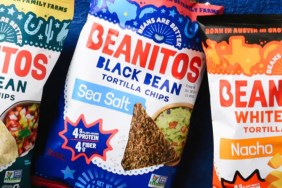A few days ago, I bought seaweed salad at my corner health food store thinking I was buying something healthy. After all, sea vegetables have an incredibly wide range of minerals and vitamins and are a fantastic source of iodine. Fast-forward a few hours and I could barely leave my bed I felt so sick. Turns out, high quality sea vegetables are very difficult to find and the ones I bought for $3.99 at my corner store were nowhere near the same quality as the ones I buy for five times the price at One Lucky Duck (though initially they tasted just as good). Unfortunately, I quickly learned most seaweed for sale does not come from clean, unpolluted water. Worse yet, many of the commonly sold seaweed salads have high-fructose corn syrup, MSG, artificial color and genetically-modified ingredients. A telltale sign that you should probably put down whatever salad you’re eating is if it’s a bright color (the ones at One Lucky Duck are more black/brown). It doesn’t stop there, though. Here’s a look at a few other controversially healthy foods you might want to start avoiding.
Wheat
Commonly associated with inflammation and allergies, many commercial “whole wheat” products are formulated with nutrient-free enriched flour. Always read the label carefully. A safer bet is quinoa.
Shrimp
While they may be a good source for over a dozen nutrients, shrimp has been classified by the U.S. Centers for Disease Control as one of the most allergenic foods in the U.S. because of the tropomyosin proteins they contain. Most shrimp available for consumption today also comes from shrimp farms and there have been more than a few reported cases of viruses and parasites.
Pickled Ginger and Wasabi
Did you know that most of the ginger in our country has aspartame, preservatives and artificial colors? Make sure to inquire about the source of any pickled ginger before eating it. Same goes for wasabi. The health benefits we hear about only relate to authentic wasabi, which is very rare (even in Japan). Unless you’re dining at a very high-end restaurant, you can assume that the wasabi you are consuming is loaded with artificial flavors and colors.
Nightshade Vegetables
What are they? Tomatoes, potatoes, eggplants, red, green and chili peppers along with paprika and tomatillos are among the most popular nightshade vegetables. These vegetables, like all plants, have mechanisms to defend themselves against predators. In this case, they’re called phytochemicals and specifically a type called alkaloids. Basically, when these vegetables are in danger of being eaten, they create alkaloids, thereby becoming more bitter. The primary kind of alkaloid found in nightshades is called solanine and an increasing amount of evidence is showing that it may increase inflammation and stiffness associated with rheumatoid arthritis. It’s important to bear in mind, however, that it’s all a matter of quantity and that in small-to-moderate quantity, alkaloids are actually beneficial.
Click here to find out why you might want to avoid soy, gluten and dairy.








